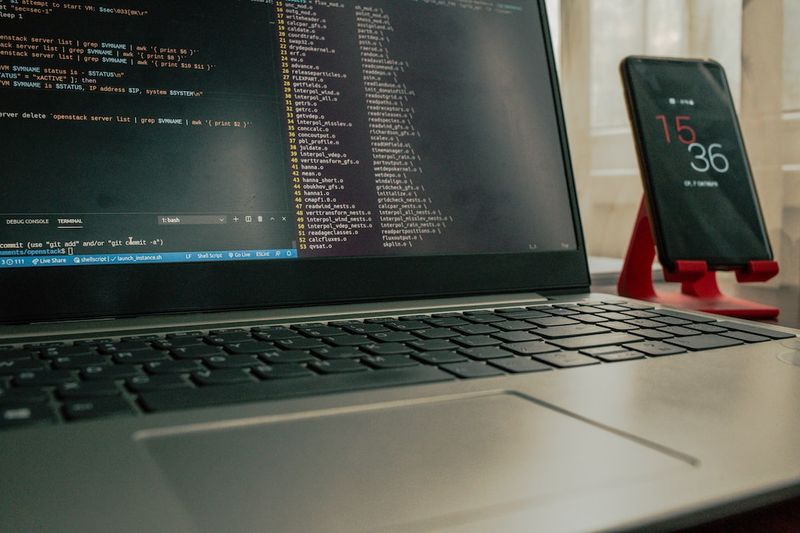Report: New hVNC macOS Malware Advertised on Hacker Forum
Introduction
A new type of malware targeting macOS devices has emerged and is being advertised on a prominent cybercrime forum, as reported by Israeli cybersecurity company Guardz. Known as Hidden Virtual Network Computing (hVNC) malware, it poses a significant threat to small and midsize enterprises (SMEs). This malware allows threat actors to take control of remote systems without the knowledge of the user, potentially leading to the theft of sensitive information. This report will examine the details of the hVNC macOS malware, its capabilities, and the potential implications for cybersecurity.
The hVNC macOS Malware
The hVNC macOS malware has been available on a Russian hacker forum since April 2023. It is being advertised by a threat actor using the username ‘RastaFarEye’ and is being sold for $60,000. The malware claims to have been tested on macOS versions 10 to 13.2 and offers persistent access to compromised systems. It has reverse shell and file management capabilities, browser detection, and can run without requesting permissions from the user.
The primary purpose of this malware appears to be the theft of sensitive information, including credentials, personal and financial data, and other types of data. Additionally, it provides attackers with remote control over infected machines, allowing them to execute further malicious activities.
Malware Development and Credibility
The developer of the hVNC macOS malware demands a $20,000 payment for delivering a loader that expands the capabilities of the tool. This developer, operating under the ‘RastaFarEye’ username, is known for offering other malicious tools, including an hVNC malware variant targeting Windows. The developer has a ‘seller’ status on the forum, indicating an endorsement from the forum’s administrators, and has deposited $100,000 to show other cybercriminals that they are a high-profile threat actor.
The deposit is held in the forum’s escrow account as a form of underground insurance, protecting buyers in case the malware does not meet the description in the original post. The credibility of this threat actor and the malware they are selling is therefore regarded as relatively high.
Implications and Recommendations
The emergence of this hVNC macOS malware highlights the ongoing challenges and risks associated with cybercrime. It is crucial for SMEs to up their defenses and take appropriate measures to protect their systems and sensitive information.
To mitigate the risk posed by this malware, SMEs should consider the following recommendations:
1. Strengthen Security Measures
Review and update existing cybersecurity measures to ensure they are robust and up to date. This includes using reliable antivirus software, installing security patches promptly, and implementing network security protocols such as firewalls and intrusion detection systems.
2. Educate Users and Employees
Raise awareness among users and employees about the risks of phishing attacks and untrusted downloads. Provide regular training sessions on cybersecurity best practices and promote a culture of vigilance and skepticism when interacting with unknown or suspicious sources.
3. Monitor and Update Systems
Regularly monitor systems for any unusual activity or signs of compromise. Develop and implement a comprehensive patch management program to ensure that software and operating systems are updated with the latest security patches and fixes.
4. Implement Multi-factor Authentication
Implement multi-factor authentication (MFA) across all systems and accounts. MFA adds an extra layer of security by requiring users to provide additional proof of identity, such as a unique code sent to their mobile device, in addition to their password.
5. Backup Data Regularly
Regularly back up critical data to protected and secure offsite locations. This will help minimize the impact of a potential malware attack and facilitate the recovery process in case of data loss.
Conclusion
The emergence of the hVNC macOS malware serves as a reminder of the ongoing and evolving cyber threats faced by individuals and organizations alike. The sophistication and capabilities of this malware, coupled with the credibility of its developer, make it a significant concern for SMEs. By taking proactive measures to strengthen security defenses, educate users, and implement best practices, SMEs can enhance their cybersecurity posture and mitigate the risks associated with this malware and others like it.

<< photo by Michael Dziedzic >>
The image is for illustrative purposes only and does not depict the actual situation.
You might want to read !
- The Growing Risks: Balancing Data Utilization and Security in the Utilities Sector
- The Shifting Landscape: BlueCharlie’s Countermeasures After Intelligence Leaks
- The Rising Threat: One-Third of Industrial Control Systems Left Exposed
- National Security and AI: Insights from Deputy Advisor Anne Neuberger
- Parsing the Power: Unveiling the CPU’s Achilles’ Heel in Data Theft
- AWS SSM Agent Misuse: Unveiling the Covert Remote Access Trojan Undetected
- Tesla Jailbreak: The Dark Side of In-Car Technology
- Salesforce’s Zero-Day Email Vulnerability Enables Phishing Attack on Facebook
- The Hidden Dangers: Exposing Remote Control Threats for Apple Users
- The Danger of Google Ads: LOBSHOT backdoor used to lure Corporate Workers
- Investor Confidence in Software Supply Chain Security Drives $20M Funding Round for Socket
- GameOver(lay): The Unveiling of Two Critical Linux Weaknesses Endangers Nearly Half of Ubuntu Users




